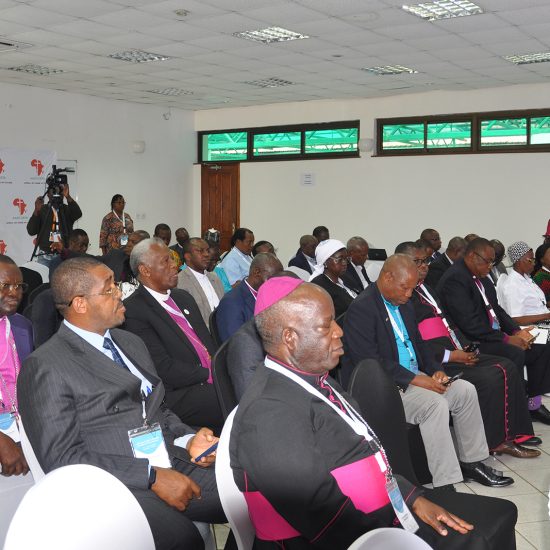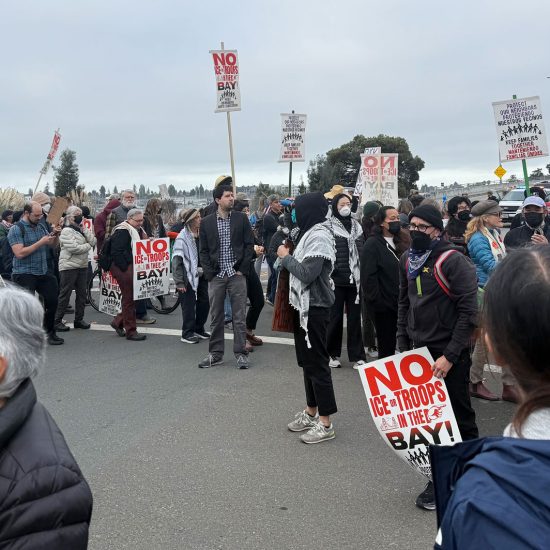

BELIEVE ME: The Evangelical Road to Donald Trump. By John Fea. Grand Rapids: Wm. B. Eerdmans Publishing Co., 2018.
Note: This review was originally posted in 2018 on my blog Ponderings on a Faith Journey. While many years have passed, since that review was published Donald Trump lost an election, which he refused to acknowledge, has been impeached and indicted, and is now the Republican candidate for the Presidency of the United States, what John Fea shared in 2018 remains pertinent, as does, I believe, my review, which is posted below (updated only in terms of grammar).
It is said by pollsters that 81% of white evangelicals voted for Donald Trump in 2016. The question on the minds of many is why? Why Donald Trump? After all, the current President has demonstrated few if any marks of being a Christian, let alone being an evangelical. His past is filled with morally dubious activities, including affairs. He is course in his language. He seems to be a bully. He shows little if any compassion for others. He feels most at home when bashing others. Indeed, he doesn’t seem at all concerned about matters on the heart of Jesus. So, why did so many white evangelicals vote for Donald Trump?

Robert D. Cornwall
Evangelical historian John Fea, who describes himself as being among the 19% who didn’t vote for Trump, sets out to answer that question. In a book titled Believe Me, which borrows a phrase regularly on the lips of Donald Trump, Fea lays out the road map to the 2016 election, a road that extends back to the beginnings of British colonization of the North American continent. As for the 2016 election, Trump wasn’t the first choice for evangelicals. Counted among the more traditional candidates vying for the nomination, were candidates like Ted Cruz, Mike Huckabee, and Marco Rubio, all of whom have deep ties to the evangelical world and would seem to be a better fit. As Fea reveals, several evangelical leaders anointed Cruz as God’s choice. Yet all these candidates failed to win the nomination, losing to someone who seemed to have none of the qualities that evangelicals have in the past looked for in their candidates. Trump is not an evangelical, and yet as he solidified the nomination he consolidated his hold on this important block of the electorate. If polls are to be believed, this block remains solidly behind him, regardless of his antics. They appear to see him as their protector in a world closing in on them.
Before moving on, I should introduce my readers to the author of this important book. John Fea is professor of American History at Messiah College, a well-regarded Christian college. Among his books is Was America Founded as a Christian Nation? This also is an important book, as John helps the reader make sense of the historical record, showing that the United States has been in one sense Christian in its origins, due to the preponderance of Protestant Christians who have made up its population. At the same time, the founders had the chance and chose not to enshrine Christianity as the religion of the nation, leaving Americans free to find their own paths. In many ways, Believe Me is a continuation of that book.
As Fea tells the story of the 2016 election and the current presidency, we can trace the evangelical embrace of Trump to three basic points: fear, the desire for power, and the embrace of nostalgia (including the idea that America is a Christian nation, and that Christianity should be favored by the government). We can begin with the role that fear plays in the story. Fea demonstrates that fear has been an important element in the evangelical story from the beginning. It was instilled in the people by Puritan leaders, who warned against impiety and heresy (whether from Quakers, Baptists, or witches). From that starting point, fear has been part of the story.
Consider the role it played in the election of 1800 when the Federalists sought to capitalize on Christian fear of Jefferson’s religious skepticism to re-elect John Adams (who might have been a Unitarian, but not a skeptic in the mold of Jefferson). He points us to a Federalist newspaper that suggested a Jefferson win would lead to “a wave of murder atheism, rape, adultery, and robbery” (p. 15). We see similar visions in play later in the 1850s in response to increased Catholic immigration. How different is MAGA from the Know-Nothings of the 1850s? In other words, the fear of the other, whether non-white or non-Protestant has been a staple of American religious and cultural life. This was seen in the response to President Obama, who was seen as exotic, maybe even subversive — a Muslim in disguise. So, Trump didn’t invent fear-mongering, but he was a quick learner when it came to its political usefulness.
The second element is the desire for power. While evangelicals were once politically quiescent, starting in the 1960s, with fear as a driver, they began to seek political power. As they began to fight the culture wars, they came to believe that success required political dominance. They’ve been seeking this power for a generation or more, but they never quite got what they wanted, until now. Donald Trump offered a pathway to power for evangelicals who had been stymied for years in waging a culture war focused on abortion, gay marriage, and religious liberty (for themselves, not necessarily for others — thus the support for Trump’s immigration policies). Trump might not be a paragon of morality, but he offered them something they hadn’t seen before — a possible President who would use power on their behalf. Trump promised that Christians would have their seat at the table of power.
As Fea demonstrates, Trump gravitated to particular forms of Christianity, including the Christian Nationalism of Robert Jeffress and Jerry Falwell, Jr. along with the preachers of the prosperity gospel. The latter appealed to Trump, because this theology celebrated his portrayal of himself as a successful businessman, and therefore despite all the evidence to the contrary, he must be blessed by (chosen by) God for this position. Most specifically, Trump’s strongman style appealed to a form of Christianity that looked to strong male leaders. Even if he’s not specifically Christian, he could be the incarnation of the Persian King Cyrus who liberated the Jewish exiles from Babylon. Trump, as Fea notes, has delivered on important promises, most specifically appointments to the Supreme Court of persons who would support evangelical concerns about abortion, religious liberty (an important conversation in the book), and immigration. Here is the kind of leader, who is mean enough to take on their enemies.
While Trump figures prominently in this story, it is larger than him. His rise to power and partnership with the Religious Right fits with the playbook developed decades ago by people like Jerry Falwell and the Moral Majority. Whereas white evangelicals had been rather quiescent in the 1950s, the advent of the civil rights movement, and with it the push for integration of schools and other venues (leading to the dreaded race-mixing) raised concerns. This was especially true as alternative whites-only Christian academies in the South came under scrutiny. Concerns about integration, coupled with changes in the immigration codes, along with a new awakening on abortion, led to the creation of a movement.
With the movement came a playbook to push back on trends that threatened their place in society. Part of this effort included advocating for smaller government, even as they took seats on local governmental entities. They also sought to gain control of the Supreme Court. Fea writes: “The fracturing of the nation’s Christian consensus, the Christian Right argues, took place at the hands of unelected liberal justices such as Hugo Black, whose decisions could only be overturned by new justices who had to be nominated and appointed by officials in the two elected branches of the federal government” (p. 61). Trump didn’t write the playbook, but he has embraced it.
Fea coined the term Court Evangelicals to describe evangelical and charismatic preachers, people like Robert Jeffress, Jerry Falwell, Jr., and Paula White. These preachers not only have the President’s ear, but they have been strong advocates for the President and his policies. White vouches for his salvation, and Jeffress, who is Southern Baptist, has promoted Trump the Strongman, believing that his vision of Christian Nationalism requires someone in the mold of Trump. Fea quotes Jeffress telling a Dallas paper that “frankly, I want the meanest, toughest son of a gun I can find. And I think that’s the feeling of a lot of evangelicals” (p. 39). Since Trump fills this requirement, much is forgiven. For those who are unfamiliar with the idea of the Court Evangelicals, the chapter on them is a must-read.
All of this — the fearmongering and the search for power, is rooted in nostalgia (not history). While Trump has never specified when America was great, it is clear that whenever that was, it was an age when white Christians were the dominant party in American life. He notes that Black evangelicals are not nearly as supportive of going back to this undefined great American age, for the American past includes slavery and Jim Crow. For many white evangelicals and allies, whether spoken or not this beloved past likely existed at a time when schools were opened with Protestant prayers, abortion was illegal, women knew their place, immigration was limited, and race-mixing was discouraged (to put things mildly). For at least some Americans the utopia that once existed is not something they would like to see return.
What I’ve given is not a chapter-by-chapter exploration of the book. I’ve picked up some of the themes present in the book, which I deem highly important. If we are to understand what is at stake and what is in play at this moment in time, at least for Americans, if not the world, we need to understand what drives this core base of Donald Trump’s power. Fea notes that Trump’s base is older—with an average age of around 57 — and thus younger evangelicals are less attracted to it. Therefore, the reason many have embraced Trump is that there is the feeling that this is the last desperate effort of the culture wars. Fea compares this embrace of Trump to Picket’s Charge, that last-gasp attempt to turn the tide at Gettysburg.
Fea writes that his approach is that of a historian. He wants to tell the story from as objective a position as possible and is reticent to offer solutions here. However, he realizes that there is too much at stake not to offer an alternative to this narrative. Therefore, in the conclusion, he counsels his fellow evangelicals to take a different course. This starts with an embrace of hope rather than fear, humility rather than power, and history rather than nostalgia. He draws this response from Martin Luther King and the Civil Rights Movement. In the end, Fea counsels his readers that “evangelicals can do better than Donald Trump” (p. 190). By better he doesn’t mean Mike Pence or Ted Cruz (though they fit better the traditional picture). He recognizes the validity of some concerns on the part of evangelicals, but the trajectory taken is dangerous both for the nation and for evangelicalism.
Believe me! This is a book that must be read, especially by those of my more liberal/progressive community who seem stymied by Trump’s popularity among evangelicals. In Believe Me John Fea gives us insight into why they might entrust their future to someone whose values and personality don’t seem to fit the Christian mold. Reading the book might even lead to conversations that can create hope, humility, and respect for history. So, please read carefully!
This review originally appeared on BobCornwall.com.
Robert D. Cornwall is an ordained minister in the Christian Church (Disciples of Christ). Now retired from his ministry at Central Woodward Christian Church (Disciples of Christ) of Troy, Michigan, he serves as Minister-at-Large in Troy. He holds a Ph.D. in Historical Theology from Fuller Theological Seminary and is the author of numerous books including his latest “Second Thoughts about the Second Coming: Understanding the End Times, Our Future, and Christian Hope” coauthored with Ronald J. Allen. His blog Ponderings on a Faith Journey can be found at www.bobcornwall.com.






